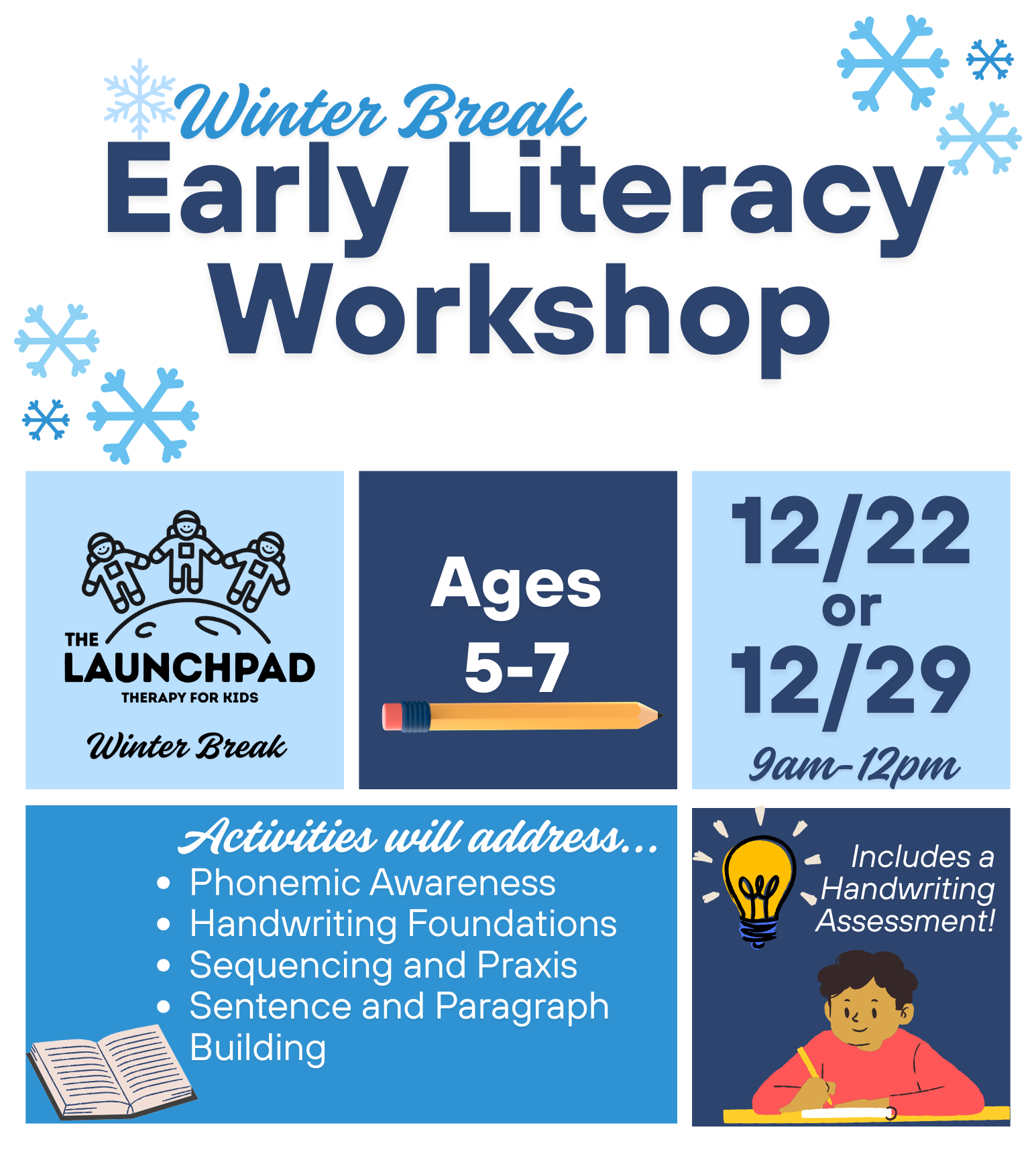Registration is open for our winter break workshops!!
Ages 5-7
This 3-hour workshop is a unique blend of literacy development and sensory integration. A handwriting assessment is INCLUDED in the cost. Activities will address handwriting, visual motor, fine motor, praxis, self-regulation, phonemic awareness, sequencing, reading comprehension, grammar, storytelling, and more!!
Monday 12/22 or 12/29, 9:00-11:45 AM
Please pack water and a snack for your child. There will be a break to eat snack about halfway through the morning.
Register online: HERE
Questions? Let us know!


